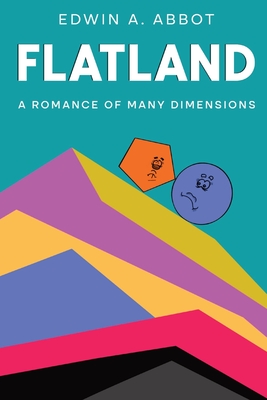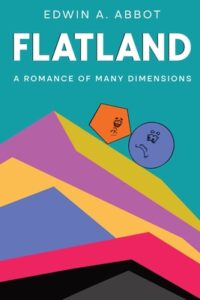Section 16: How the Stranger vainly endeavoured to reveal to me in words the mysteries of Spaceland
bySection 16 begins with a revelation that forces the narrator to question everything he thinks he knows. Just moments after hearing his wife’s farewell cry, he attempts to engage the strange visitor more directly. However, the figure before him is so visually and behaviorally disorienting that it sends him into a state of shock. Lacking angularity but shifting in brightness and size, the stranger appears to defy the rules of Flatland physics. This strange variability leads to suspicion—a gut instinct that the visitor could be a criminal, perhaps a dangerously irregular Isosceles disguised as a Circle. Fear clouds the narrator’s judgment, and rational thought gives way to instinctual defense as he tries to identify the visitor by physical contact, a common but flawed method in Flatland society. His concern is not just for safety but for understanding—he needs certainty in a world built on geometric assumptions.
The narrator’s fear begins to ease as he touches the visitor and finds no irregularities at all. What he expected to be a deception turns into the most perfect Circle he has ever encountered. Every part of the figure is smooth, symmetrical, and uniform. The lack of roughness confirms the stranger’s claim: this is no common figure, but one of the highest order. That realization brings a wave of embarrassment, as the narrator reflects on his own limitations. His assumptions were based on incomplete data and a narrow frame of reference. He had relied on tactile recognition in the absence of fog, which is crucial for sight recognition in Flatland. In dry conditions, such assumptions become unreliable. This moment serves as a metaphor for human perception—how easily judgment can be clouded by fear, especially when unfamiliar truths challenge old methods of understanding.
Ashamed, the narrator prepares to speak, only to be interrupted by the stranger who grows impatient with the long and awkward introduction. It becomes clear that the visitor is used to being recognized and is frustrated by the delay in conversation. This impatience shows a contrast between the advanced being’s expectations and the slower, cautious approach of those still bound by Flatland conventions. Despite his high rank, the Sphere does not bask in admiration; he is direct, goal-oriented, and ready to move beyond pleasantries. His tone reflects the urgency of his mission: to enlighten, not to be admired. Still, the cultural and perceptual gap between them is enormous, and communication proves challenging. For modern readers, this dynamic highlights how individuals from more advanced perspectives often struggle to connect with those who lack the framework to understand them.
The encounter also reveals Flatland’s dependence on physical touch and shape as a substitute for deeper comprehension. Even among the educated, recognition and trust are based on geometry, not intellect. This underscores the limitations of Flatland society—how it values conformity and discourages abstract thought. When unexpected phenomena arise, fear takes precedence over inquiry. The narrator’s journey of realization is just beginning, but the tension between what he perceives and what is possible reveals the rigid boundaries of his world. The Sphere, representing higher knowledge, must find a way to bypass these defenses without triggering rejection or panic. It’s a challenge shared by any teacher or innovator who must reach those bound by deeply held but incomplete beliefs.
In a broader sense, the scene reflects how enlightenment often arrives not with grandeur, but with discomfort and misinterpretation. Truth, especially when it challenges norms, can appear threatening or even dangerous. But through humility, reflection, and eventually dialogue, it begins to reshape the mind. The narrator’s shame is a crucial step—not a failure, but a sign that growth is underway. It is through his willingness to question and feel shame that he opens the door to transformation. What begins as fear might eventually become understanding, if pride does not interfere. The stranger’s arrival marks the beginning of that process, pushing the narrator to a threshold where he must either evolve or retreat into ignorance.


